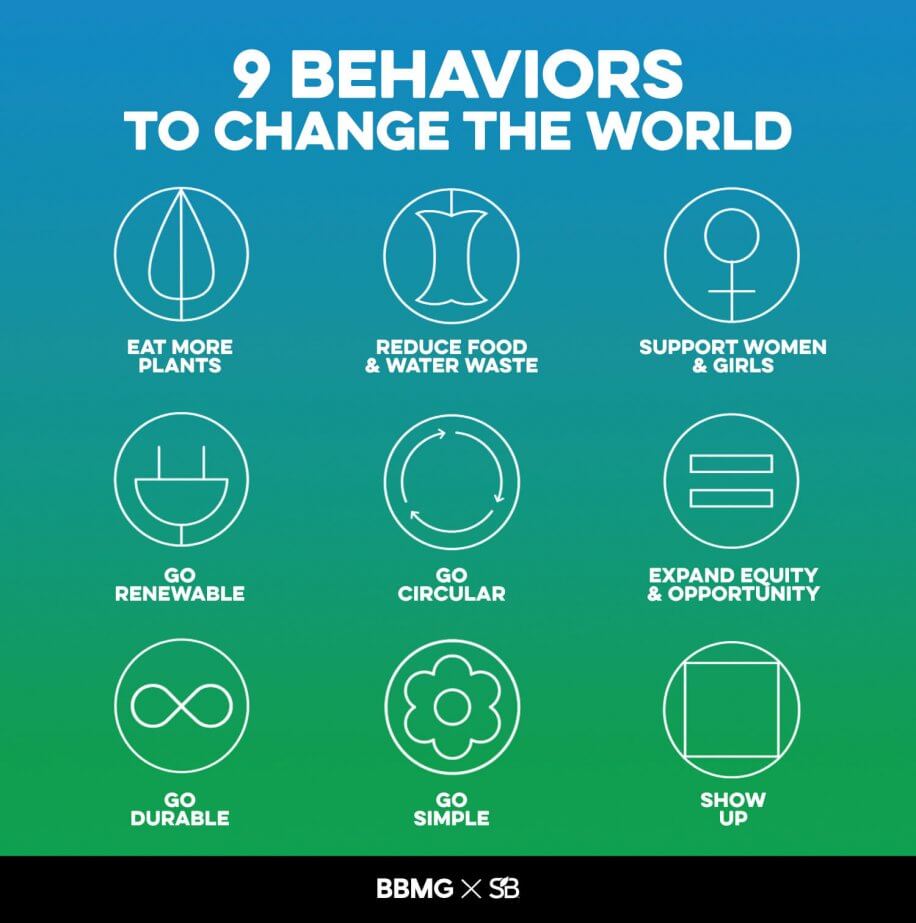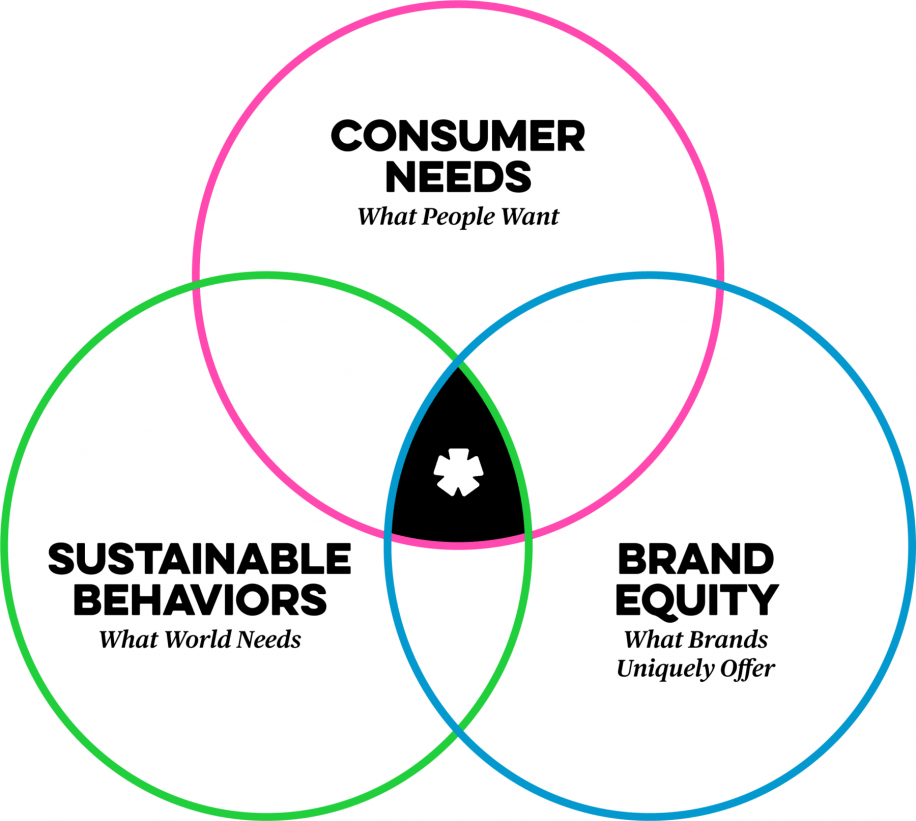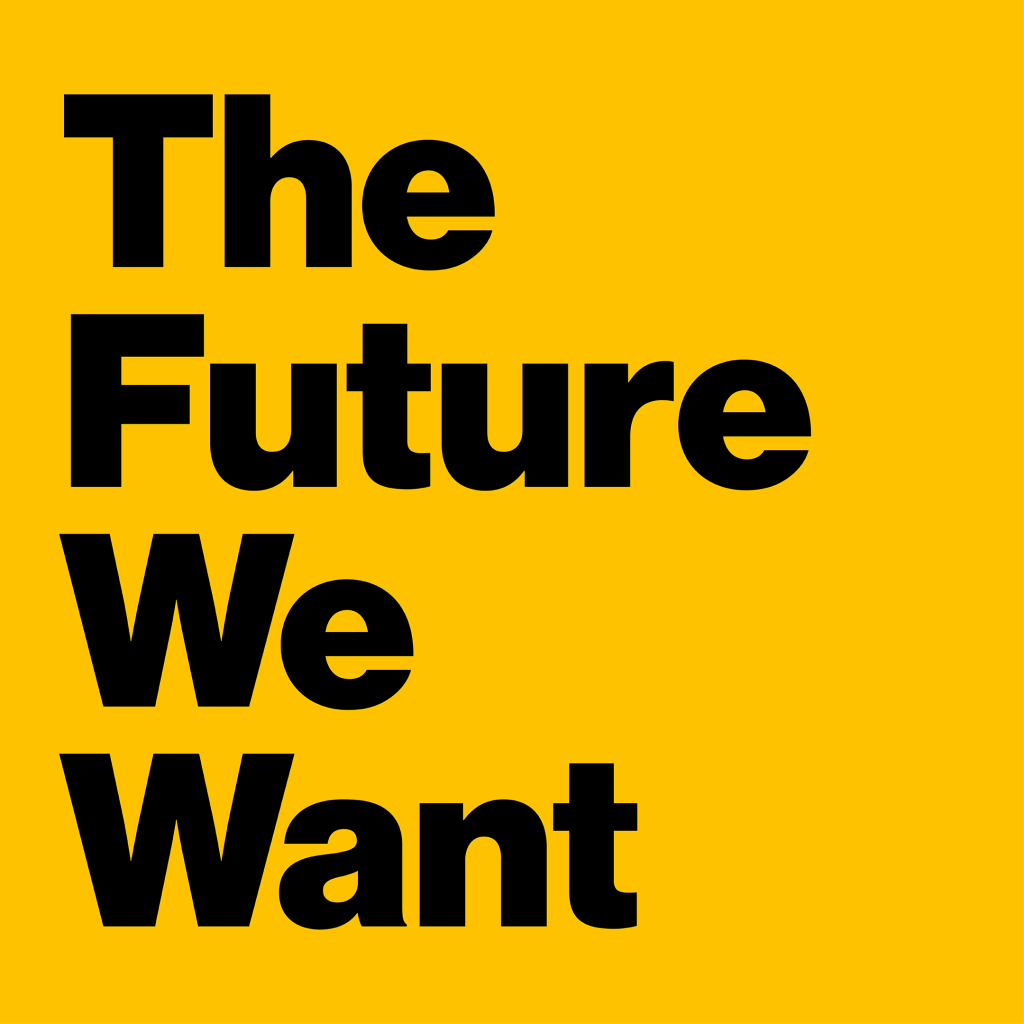How Food Brands Can Break Through

A Simple Model for Purpose-Led Marketing and Innovation
Related: Read our research report, Radically Better Food
Plant-based meat and milk, plastic straw bans, origin stories for everything from coffee beans to quinoa grains. Our relationship with food and how it’s consumed is seeing a moment of rapid innovation and transformation, and sustainability is at the center.
Of course food has long been on the forefront of the sustainability movement. During the New Deal and World War II era the need to conserve our limited resources brought on a movement in popular culture to curb food waste and support our local farming and dairy economies — rendered in Works Progress Administration (WPA) posters like the ones below.

Today the threat of climate change and the harms of industrial agriculture are no less existential. Once again we’re seeing a wave of support for food that is produced in a way that is sustainable and aligns with our goals for a brighter future. There is a growing movement to eat less meat, and certifications like Rainforest Alliance, Non-GMO, and Fair Trade are ubiquitous to the point that consumers find themselves overwhelmed by claims in the grocery aisle.
In an already crowded CPG market, how can food brands elevate their positive impact to break through the clutter?
What Really Matters to Consumers?
BBMG and Sustainable Brands’ recent U.S. consumer study, The Pull Factor Report: Unleashing the Power of Brands to Create a Culture of Sustainable Living for All, explored what factors really matter when it comes to purchase decisions across several categories, including food. As expected, food purchasers across the U.S. prioritize quality (89%), taste and flavor (86%), value / price for the money (85%), product performance (83%) and products made without toxic chemicals (82%) as their top priorities.
But food category actives — those who are the primary purchaser of food in their household and also actively recommend food CPG products to friends and family — are also gravitating toward brands that are differentiating themselves with environmental and social impact.
Food category actives prioritize origin or being locally made (62%), organic (59%) and brands that support a cause they believe in (53%).
To win over these category influencers, food brands first need to look at ways to deliver on the basics like quality and performance, then invest in environmental and social impact, and then take it a step further with product innovation and storytelling to make sure the impact story breaks through.
With so much to solve for, marketers may feel paralyzed. This is where our Pull Factor model is revealing answers and supercharging marketing and innovation.
A Framework to Differentiate Your Brand with Purpose
To help brands accelerate their purpose-led innovation and marketing the Pull Factor Project identified nine behaviors for a more sustainable lifestyle.

We also identified consumer need states that when combined with these sustainable behaviors can inspire breakthrough brand innovations at the intersection of what consumers desire for their own fulfillment and what the world truly needs in order to preserve a bright future for our planet.

We developed the Pull Factor framework with The Procter & Gamble Company, The Estée Lauder Companies, Happy Family Organics, Keurig Dr Pepper, Target, Johnson & Johnson Consumer Health, National Geographic, HEINEKEN USA and VEOCEL. We’re excited about the possibilities it’s unlocking.
Food Brands Delivering What People Want and What the World Needs
This work was inspired by, and is reflected in, so many future-forward brands that we already see in the marketplace.
Impossible Whopper helps people eat more plants to reduce meat consumption while serving our human need to feel savvy — to outsmart the system and make the most of what we have, even while eating fast food.
Kroger has teamed up with German company Infarm to create in-store produce farms using hydroponic technology at two of its QFC stores in the Seattle area. This innovation helps our society go renewable as it cuts out the need for fossil-fueled transportation and can tap renewable energy sources to grow the plants. What’s more, it fulfills our human need to feel rooted — to feel connected to nature and the rituals and traditions that make us feel grounded through change. So many of us, particularly in urban areas, would love to be reconnected to where our food comes from.
The plant-forward QSR Sweetgreen partnered with celeb chef and sustainable food advocate Dan Barber to educate the public on how delicious it can be to reduce food and water waste when they created a “scrap salad” made from typically unused vegetable parts like cabbage cores, kale stems and broccoli stalks. This menu special appeals to our human need for simplicity — to feel nourished and balanced through a ‘back to basics’ lifestyle. (Certainly people in those WWII-era kitchens wouldn’t have wasted a scrap.)
The world not only needs brands to help us adopt environmentally sustainable behaviors, but socially sustainable behaviors as well. This is why we love the way Land O’Lakes and the ice cream purveyors Coolhaus support women and girls by spotlighting how women-owned businesses make the world go ‘round. By supporting these brands, we feed our need for belonging — to feel part of something that’s bigger than ourselves.
And because BBMG loves ice cream, we’d be remiss if we didn’t note another delicious example of the Pull Factor in action: Ben & Jerry’s latest limited edition flavor, Justice ReMix’d, helps expand equity and opportunity. A portion of the proceeds go to the Advancement Project to support its work on prison reform, on ending the school-to-prison pipeline, and working with Black Lives Matter. It also gives us an easy way to serve our human need for purpose — to live with meaning and make an impact in the world, one yummy pint at a time. Plus Ben & Jerry’s offer many ways for consumers to take further action through petitioning and direct involvement with their nonprofit partners.
Putting the Pull Factor to Work
To dig in to the Pull Factor Project in more detail, click here to download the full length report.
Want to introduce the Pull Factor to your team? Contact us about having BBMG present the findings or facilitate a workshop.


